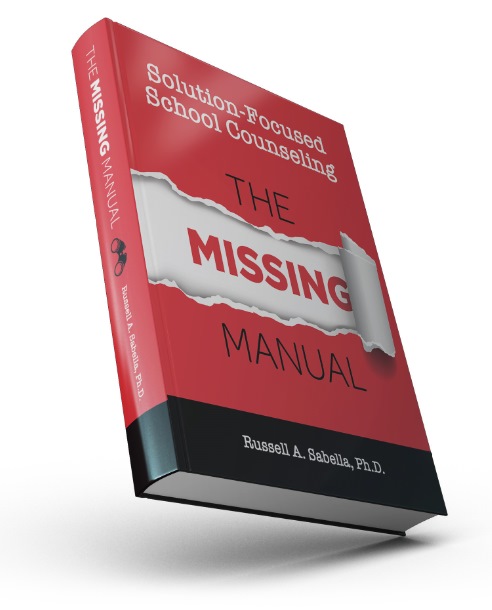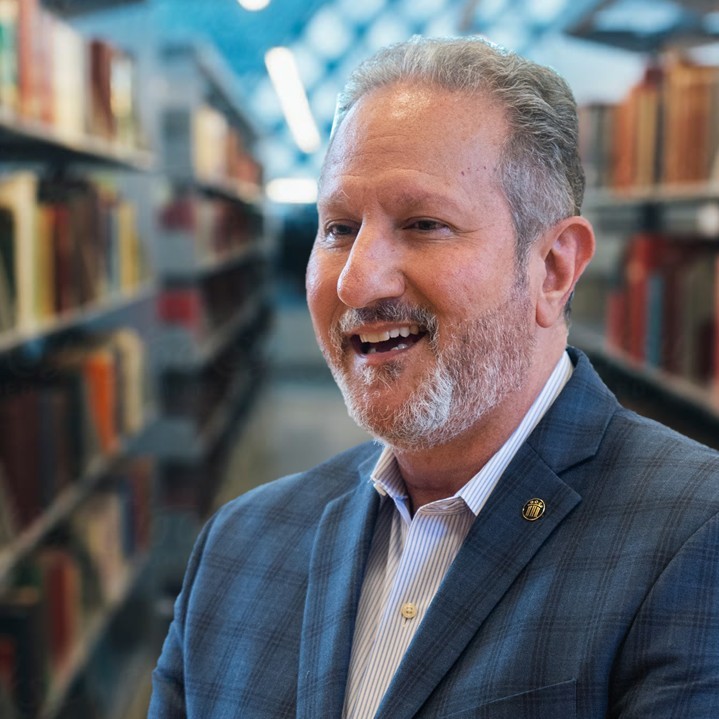 Excerpted from Sabella, R.A. (2020). Solution-focused school counseling: The missing manual. Sabella & Associates.
Excerpted from Sabella, R.A. (2020). Solution-focused school counseling: The missing manual. Sabella & Associates.
When I think about the nature of emotions and the SFBC model, I’m taken back to one of the first solution-focused meetings I had during the early days of development (March 8, 1996, per the video stamp). One of the teachers at the school where we were volunteering asked if we could work with her son, Ethan, even though he was a student at a different school. Ethan, a 6th-grader, was misbehaving, and it seemed to be getting worse every week, resulting in a high number of discipline referrals. I can still vividly remember his mom trying to talk through her tears while telling me about the struggles she had with him, both at school and home. With a bit of embarrassment, she tried to communicate the gravity of the situation by closing with, “It’s so awful; I don’t even want to be in the same room with him right now.” I asked Mom to “be on the lookout” (BOLO; more about this on p. 90) for any signs that he was back on track while we all worked together.
A few mornings later, Ethan walked into the room … well, I should say that he swaggered in using a sidestep while waving his arms back forth and tilting his head to the side. He sat down and looked at me for a few seconds and then asked, “Are you going to help me with my anger management problem?” Now before I go further with the story, I want you to think about the phrase “anger management” for a minute. What does the phrase make you wonder? What do you envision Ethan talking about? What type of details would you want to know more about? What questions might you have for him? Might they go something like one of these:
- What is the problem?
- What do you mean when you say you want help with anger management?
- What are you angry about?
- What are you angry about the most?
- What are your “triggers” or warning signs?
- How is being angry a problem?
- Did someone do something bad to you (i.e., could it be that you are angry because you are hurt)?
- What do you do to deal with your anger?
Focusing on the anger part of anger management is what most traditional (problem-centered) counselors would probably do. In the SFBC model, however, the management part is most important. We assume fluctuations between being angry and being calm because the student manages their anger better on some days than others. In this SFBC model, we look for exceptions, explore hypotheticals, and use scaling to increase the number of days when they are most calm, relaxed, and cool—especially in the face of adversity (more on all this later).
Back to Ethan. He let me know that the one thing that would let others know that he was adequately managing his anger was that he was happy. We spent some time detailing, mind mapping, minefielding, cheerleading, and amplifying “happy.” Ethan eventually identified a few behaviors, which included smiling, keeping his shoulders back (i.e., posture), and going directly to his seat after entering the classroom. He did warn me, however, that he didn’t have a lot to smile about and that I should not be too hopeful. We discussed the idea of flipping the script: Instead of feeling better and then smiling, he might decide to first smile as a way to feel better. Ethan still didn’t want to make smiling his goal, so we just called it “showing your teeth” (he did have a nice smile). He agreed to that and even smiled at the idea.
Ethan did what he said he was going to do. His teacher reported that she could tell he was going to have a better day just by how he walked into the classroom. And, of course, she responded in kind. Other kids noticed too that Ethan was doing okay and, as a result, they interacted with him more positively. His mom reported that things were much better at home. They even went shopping that week and had a good time together.
For more information about The Missing Manual, visit:
https://schoolcounselor.com/professional-development/themissingmanual/
 Dr. Russell A. Sabella is currently a Professor in the Department of Counseling in the College of Education, Florida Gulf Coast University and President of Sabella & Associates.
Dr. Russell A. Sabella is currently a Professor in the Department of Counseling in the College of Education, Florida Gulf Coast University and President of Sabella & Associates.